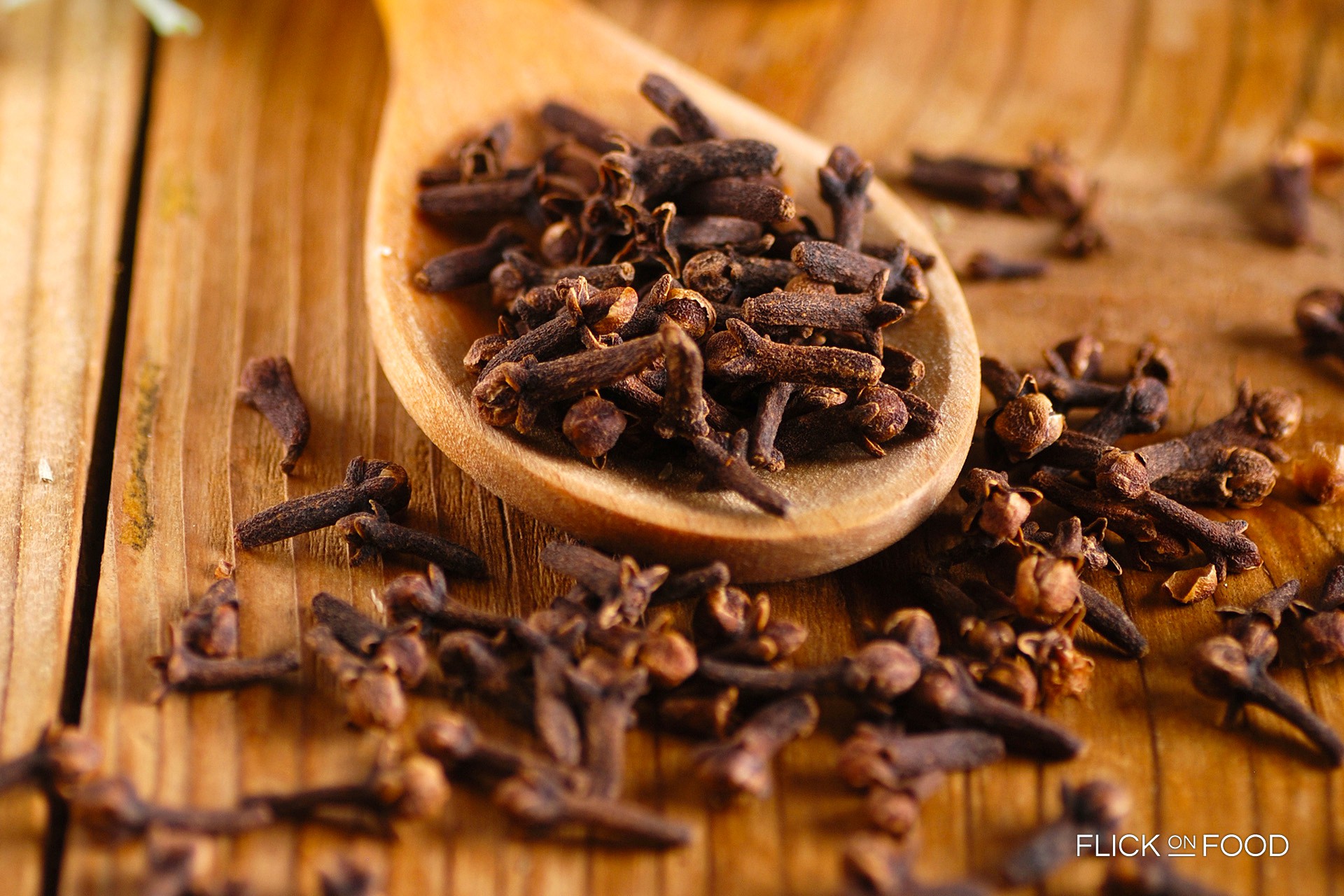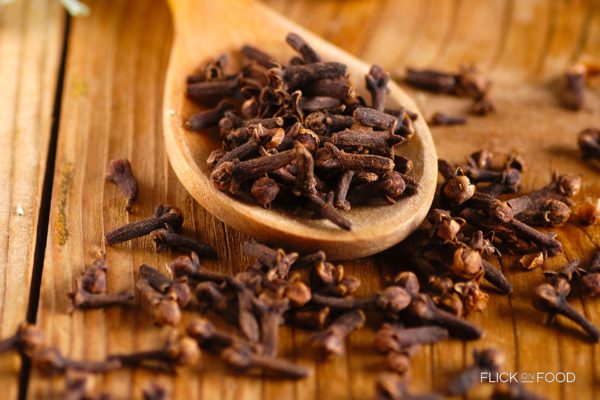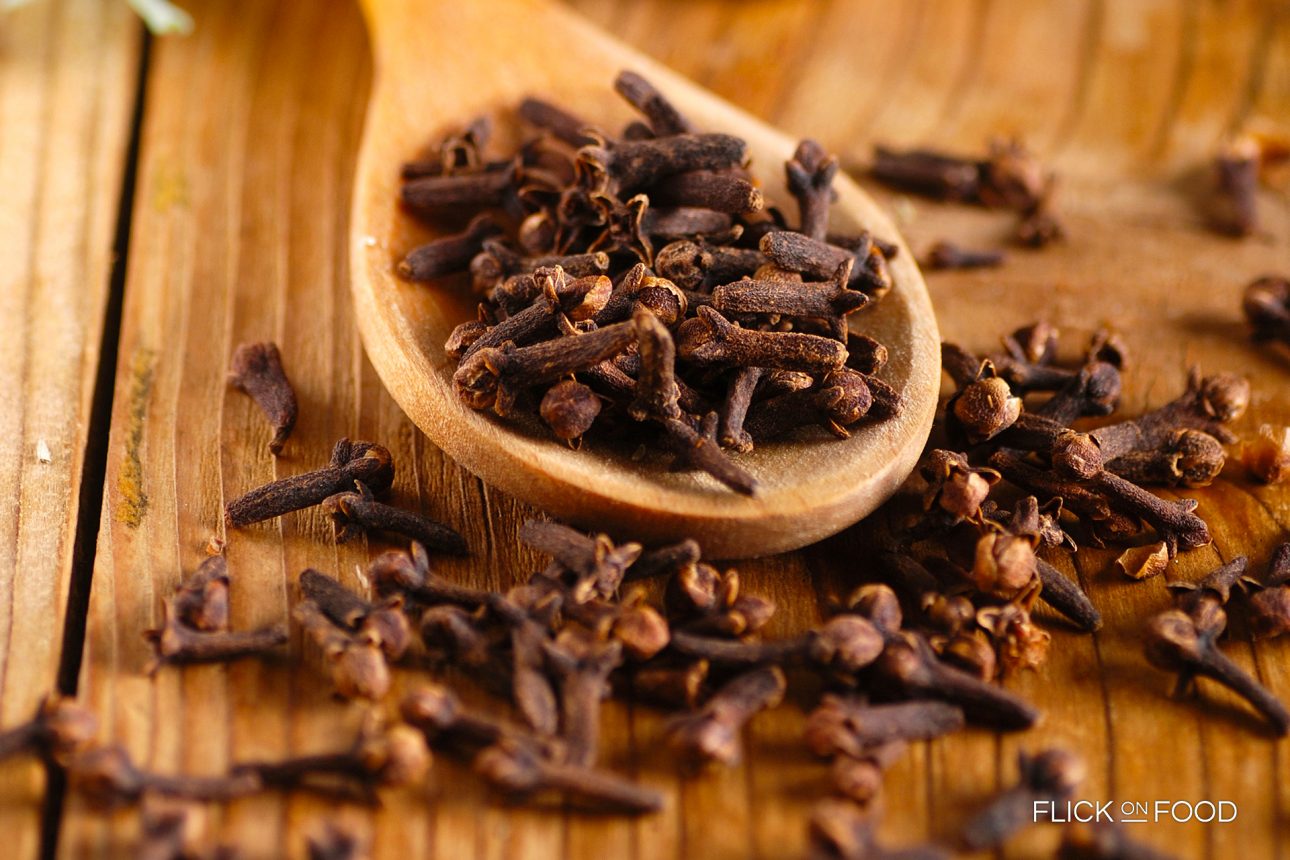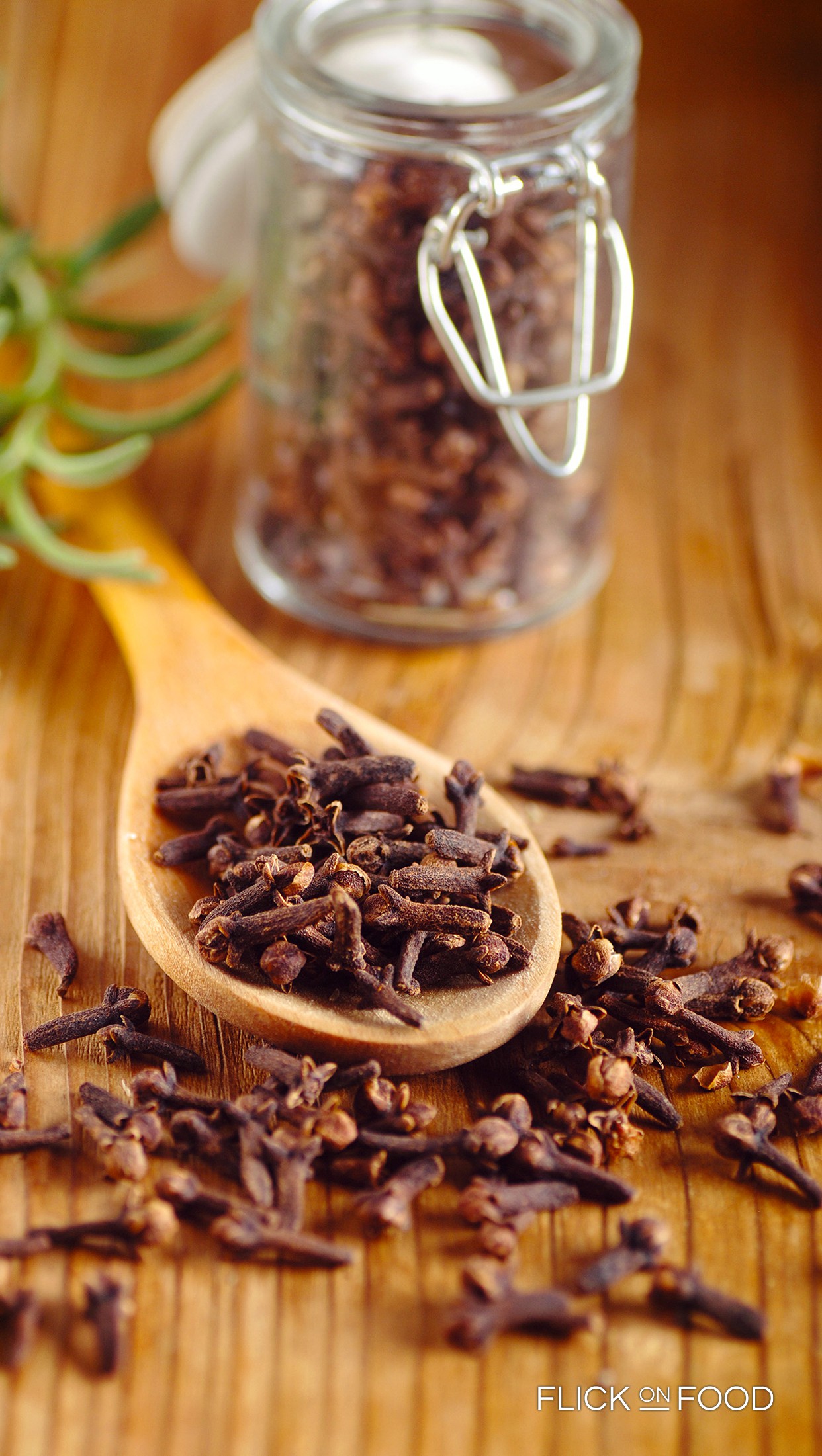
Remember how strong their flavor is before adding too many to your recipe!
Origin
Cloves are the dried bud of the Eugenia caryophyllus plant, a very common tree throughout the Orient. With a pointed end, they resemble nails, and have a scent reminiscent of carnations. Cloves are native to the Maluku Islands of Indonesia, but were introduced into other regions by the Dutch in the 18th century. The plant produces flower buds at the end of the rainy season, which are light green at first, and then turn from pink to bright red. When they are pink, they are harvested and dried to become cloves as we know them.
Cookit
Cloves have a very strong aroma and a peppery aftertaste. In Europe, they’re often used in spiced cakes, Christmas sweets, fruit preserves, and baked fruit (along with cinnamon or cardamom). They’re also used to season roast meats, and in hot beverages like mulled wine or Ratafia, teas, and other infusions commonly drunk in the winter. They also enhance the flavor of mature cheeses and vegetables. Try roasting pumpkin with cloves, a bit of lemon and your favorite spices.
Did you know
Cloves have antiseptic and painkilling properties, and are also refreshing and invigorating. Eugenol, a compound derived from cloves, is used in orthodontics as an oral disinfectant, and as a mild painkiller for dental pain. To check if they’re fresh, put a few cloves in a cup of water. If they’re still good, they’ll sink to the bottom.





